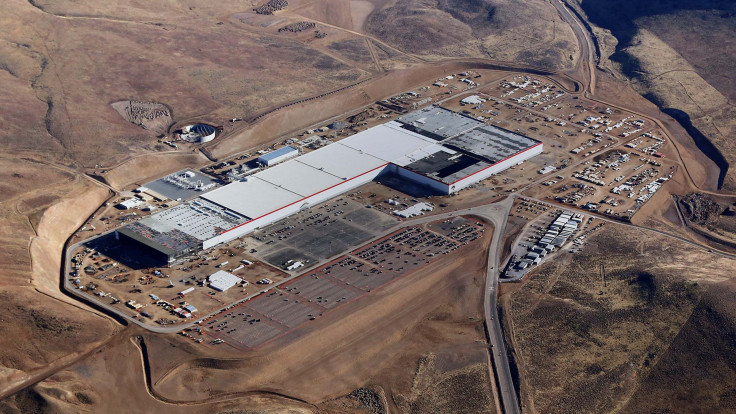Tesla Motors (TSLA) Gigafactory: Battery Cell Production Starts, But Will It Ramp Up Fast Enough?

Tesla Motors’ Gigafactory, slated to be the world’s largest building once it is completed, started production of battery cells Wednesday. Already covering over 1.9 million square feet in Nevada, the factory is producing cells for Tesla’s Powerwall 2 and Powerpack 2 energy products, and will start production of cells for the upcoming Model 3 in the second quarter of the year.
Battery Cell Production Begins at the Gigafactory https://t.co/xrFl4tChBx
— Tesla (@Tesla) January 4, 2017
The sprawling facility, which will have about 13 million square feet of operational space over several floors, is manufacturing the “2170 cell” — a high performance cylindrical lithium-ion cell “jointly designed and engineered by Tesla and Panasonic to offer the best performance at the lowest production cost in an optimal form factor for both electric vehicles and energy products,” according to a statement on Tesla’s website.
The construction and operation of the Gigafactory is being done in phases, and the latter is currently only 30 percent done. Once complete by 2018, Tesla says it will produce 35 gWh worth of lithium-ion battery cells every year. That is an astonishing number, almost as much as the current production of all the rest of the world’s companies put together.
But if Tesla wants to achieve its target of manufacturing 500,000 electric cars by 2018, it will have to achieve its Gigafactory goal as well. In 2015, it produced about 104,000 vehicles and in 2016, delivered almost 76,250. A change in hardware to incorporate full self-driving technology, put in place in mid-October, could be partly responsible for the slow production rate, but increasing it almost five times in two years is a tall order nonetheless.
If things go according to plan, Tesla products may soon become a lot cheaper, which in turn could have a significant impact on adoption of clean technology.
“With the Gigafactory online and ramping up production, our cost of battery cells will significantly decline due to increasing automation and process design to enhance yield, lowered capital investment per Wh of production, the simple optimization of locating most manufacturing processes under one roof, and economies of scale. By bringing down the cost of batteries, we can make our products available to more and more people, allowing us to make the biggest possible impact on transitioning the world to sustainable energy,” the company said in the statement.
According to Dickson Data, production will be evenly split between cells for Powerpack 2, Powerwall 2 and Tesla vehicles. Once the facility is operating at full capacity, it will employ about 6,500 people directly and create another 20,000 to 30,000 indirect jobs in the surrounding areas.
Tesla has long worked with Panasonic, its Japanese partner, for its battery technology. On Dec. 27, the two companies signed an agreement to jointly manufacture photovoltaic and other solar modules at Tesla’s factory in Buffalo, New York. In comparison to the Gigafactory, the Buffalo facility is tiny, with a plan to ramp up to 1 gigawatt of solar module production by 2019. Production at the factory is expected to start in summer 2017, and will create about 1,400 jobs.
Tesla shares rose 4.61 percent Wednesday on Nasdaq, but dropped 0.15 percent during after hours trade.
© Copyright IBTimes 2024. All rights reserved.











